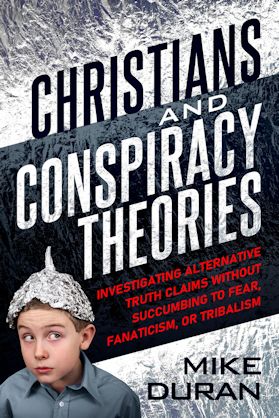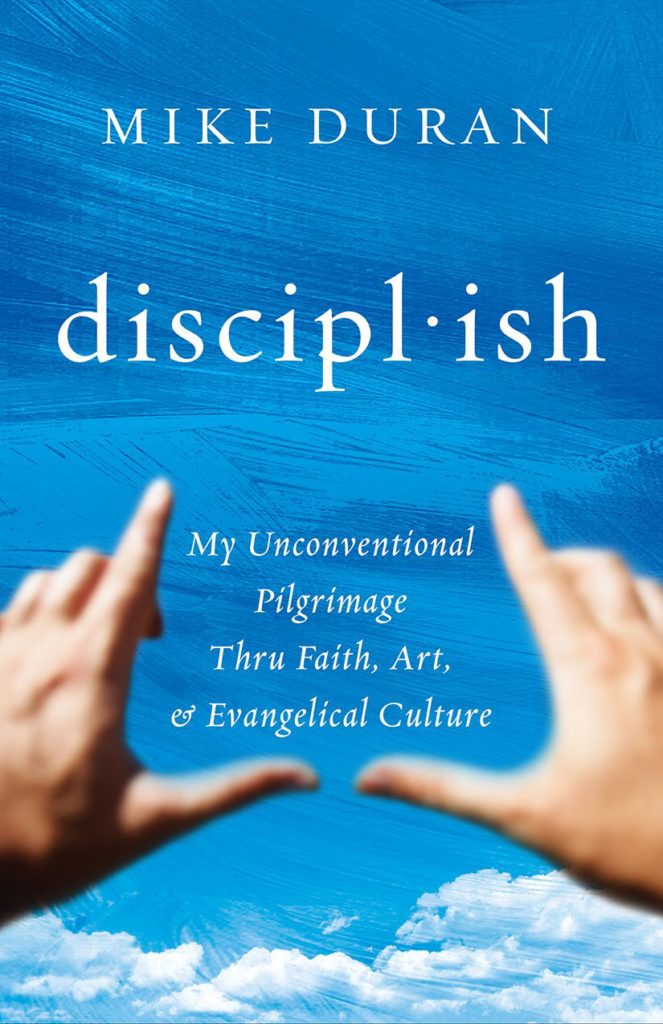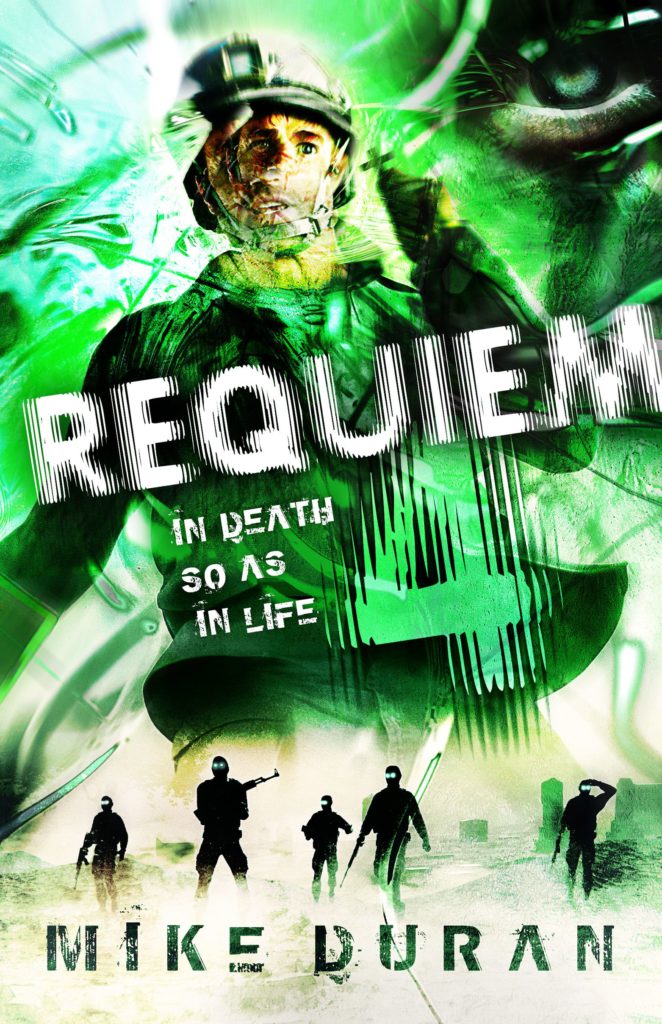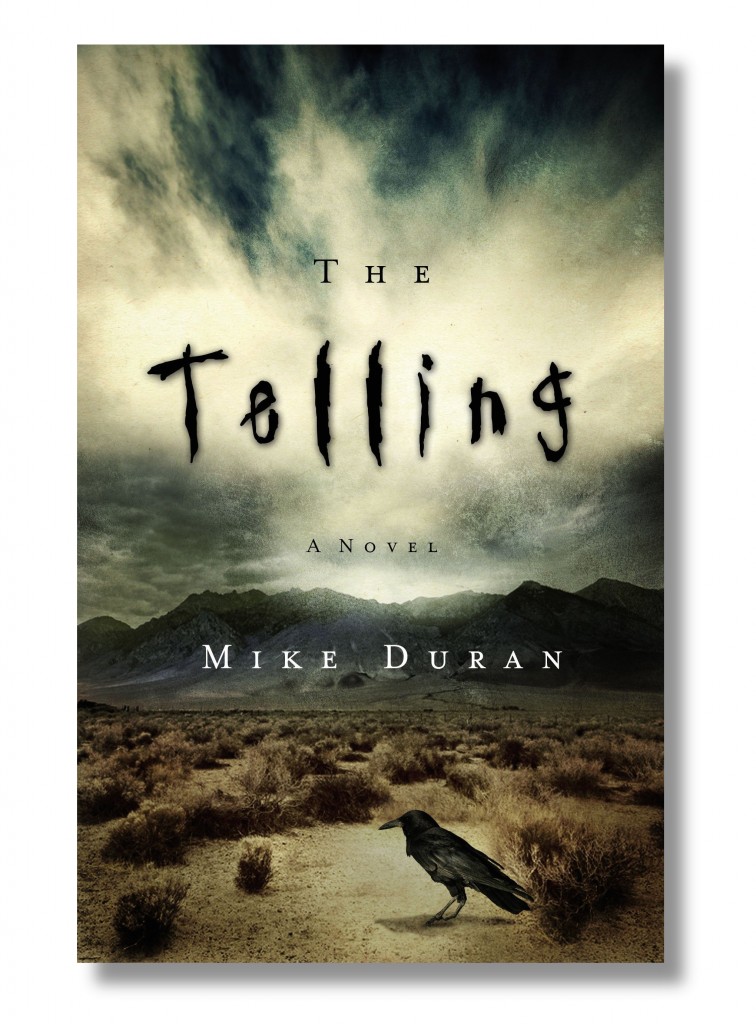 I’ve divided the common evangelical arguments against watching sex and nudity in film into these four:
I’ve divided the common evangelical arguments against watching sex and nudity in film into these four:
- “Would you let your mother, spouse, or child do that?” — The Golden Rule argument
- “But the images on the screen are REAL.” — The Nudity Isn’t Fake argument
- “Seeing naked people on screen causes people to sin.” — The Seeing is Sin argument
- “Nudity is not required to make the story better.” — The Cleaner the Better argument
In my last post in this series, I concentrated on the Golden Rule argument. In this post, let’s focus on the second:
II.) The Nudity Isn’t Fake argument — “But the images on the screen are REAL.”
Gregory Shane Morris in his recent article No Buts About It juxtaposed onscreen nudity against onscreen violence:
Here’s how this one goes: Baby-boomers raised their kids with violence in their breakfast cereal. They let us watch “Tom and Jerry” and play “Halo” and “Call of Duty,” took us to see “The Passion of the Christ,” and taught us to vote for George W. Bush. Moral majoritarian parents have raised a generation of children bathed in blood and gore. But they clutch their pearls every time a nipple slips out onscreen. “How is that consistent?” some ask.
I usually pose a counter-question: How many people has director Michael Bay—the sultan of cinematic pyrotechnics—actually blown up? How many victims’ lives did Alfred Hitchcock claim? Now, how many women have actually stripped in front of cameras for nude scenes?
John Piper makes the crucial point that media sexuality, by its very nature, is real in a way that media violence is not. Death and dismemberment in Hollywood are accomplished through prosthetics, makeup, rubber knives, and CGI-wizardry. By contrast, nude scenes really happen. Real actors and actresses remove real clothes from their real bodies.
While I admit there’s a case to be made against overusing or glorifying violence, the comparison with graphic nudity is apples-to-kumquats. Human nature is not programmed to react to violence in the way it is programmed—hardwired even—to react to explicit sexual imagery.
As with many of these arguments, there’s a lot of connective tissue which needs examined. Briefly, here’s three assumptions that are imported into this objection which need clarified:
- An assumption that nudity is inherently shameful or sinful.
- An assumption that nudity is always sexual in its expression.
- An assumption that nudity is always of the same (i.e., explicit) gradation in film.
The power of the aforementioned argument — “But the images on the screen are REAL” — often assumes one of these three things, that because nudity is inherently sinful / shameful, sexual in its expression, and/or of the same gradation and not fake, therefore it is wrong to watch it onscreen. But do those assumptions hold water? For the sake of time, and being that the arguments are all inter-connected, let’s focus mainly on that first assumption.
Does the Bible teach that nudity is inherently shameful or sinful? In a recent Facebook “discussion” on this subject, one commenter said to me, “Nudity is shameful in the bible almost without exception.” Is it? This is usually the big question for if it can be shown that ALL occurrences of nudity in Scripture are seen as shameful, or that being seen nude is almost always a sin, this would be a compelling argument against watching all onscreen nudity. Some of the most common proof texts for this position are:
- The shame felt by Adam and Eve after they sinned (Gen. 3:7)
- The nakedness of Noah and the cursing of Canaan (Genesis 9:20-27)
- General laws of sexual morality (Lev. 18)
- Not exposing oneself on an altar (Ex 20:26)
- Isaiah’s public nakedness as a sign of shame (Is. 47)
- Covering of nakedness takes away shame, spiritually (2 Cor. 5, Rev. 5)
There are others, but these are perhaps the most oft-referenced. Several things should be noted here. First we should note that there is no explicit statement in any of these verses condemning nakedness or nudity in general. (By this I mean something along the lines of ‘Thou shalt not publicly disrobe,’ or something similar.) Yes, public nudity is often viewed as shameful and definitely not endorsed. And covering someone’s, or our own, nakedness, is seen as virtuous (Ezekiel 16:7-9). That seems pretty clear. But whereas the Bible explicitly condemns specific sexual acts (lust, adultery, incest, homosexuality,etc.) it does not explicitly condemn nakedness. For example, while some use the incident of Noah as an example that nakedness is sin, it has been debated for thousands of years exactly what the sin of Ham was. The four most common theories are incest, castration, mockery, and patriarchal disrespect. The inference that nakedness is inherently evil may be extrapolated from this incident, but this is hardly a proof text for such a position. Perhaps the most unfortunate cause of this is interpretation is that earlier versions of the Bible translated condemnation of sexual immorality in terms of nakedness. Here’s some examples from Leviticus 18, one of the most common sources of “proof texts” for this position, contrasting the KJV and the NIV.
Lev. 18:6 — None of you shall approach to any that is near of kin to him, to uncover their nakedness: I am the LORD. (KJV) / No one is to approach any close relative to have sexual relations. I am the LORD. (NIV)
Lev. 18:7 — The nakedness of thy father, or the nakedness of thy mother, shalt thou not uncover: she is thy mother; thou shalt not uncover her nakedness. (KJV) / Do not dishonor your father by having sexual relations with your mother. She is your mother; do not have relations with her. (NIV)
Lev. 18:9 — The nakedness of thy sister, the daughter of thy father, or daughter of thy mother, whether she be born at home, or born abroad, even their nakedness thou shalt not uncover. (KJV) / Do not have sexual relations with your sister, either your father’s daughter or your mother’s daughter, whether she was born in the same home or elsewhere. (NIV)
So as you can see, if we use the KJV translation “uncovering the nakedness” as reference to literal nakedness, we have a strong case. However, upon closer inspection, it’s clear that the term commonly used to condemn all nakedness as sin / shame is a euphemism for “having sexual relations.” Studying parallel commentaries on this section of Scripture is helpful, clearly revealing that the phrase is not a blanket condemnation of nudity. For example, Barnes simply defines the phrase:
To uncover their nakedness – i. e. to have sexual intercourse. The immediate object of this law was to forbid incest.
Jamieson-Fausset-Brown Bible Commentary goes into more details, but renders the same result:
None of you shall approach to any that is near of kin to him—Very great laxity prevailed amongst the Egyptians in their sentiments and practice about the conjugal relation, as they not only openly sanctioned marriages between brothers and sisters, but even between parents and children. Such incestuous alliances Moses wisely prohibited, and his laws form the basis upon which the marriage regulations of this and other Christian nations are chiefly founded. This verse contains a general summary of all the particular prohibitions; and the forbidden intercourse is pointed out by the phrase, “to approach to.” In the specified prohibitions that follow, all of which are included in this general summary, the prohibited familiarity is indicated by the phrases, to “uncover the nakedness” [Le 18:12-17], to “take” [Le 18:17, 18], and to “lie with” [Le 18:22, 23]. The phrase in this sixth verse, therefore, has the same identical meaning with each of the other three, and the marriages in reference to which it is used are those of consanguinity or too close affinity, amounting to incestuous connections.
My point here, again, is not to support or advocate for public nudity. I am not a Christian nudist. My point is that such “proof texts” are flimsy, at best. Misleading, at worst.
Then you have the issue of non-condemnatory (let’s call them neutral) occurrences of nudity in Scripture.
- Saul, along with the Prophets of his day, went nude — “He stripped off his garments, and he too prophesied in Samuel’s presence. He lay naked all that day and all that night. This is why people say, ‘Is Saul also among the prophets?'” (1 Sam. 19:24)
- David danced before the Lord wearing nothing but a ‘revealing’ linen ephod — There is considerable dispute as to whether or not David danced naked or immodestly (2 Sam. 6:14)
- Isaiah went naked for 3 years as “a sign and portent” of Egypt’s captivity and shame — (Isa. 20:2,3)
- The Garasene demoniac lived naked among the tombs — (Lk. 8:26-27).
- Jesus was stripped naked on the cross — (Matt 27:28; Luke 10:30)
- Peter appears to have been fishing naked — “Therefore that disciple whom Jesus loved saith unto Peter, ‘It is the Lord.’ Now when Simon Peter heard that it was the Lord, he girt his fisher’s coat unto him, (for he was naked,) and did cast himself into the sea” (John 21:7 KJV)
- The Apostle Paul and Barnabas tear their clothing to show their humanness to the townspeople of Lystra when they thought they were the Greek gods Hermes & Zeus — (Acts 14:14) While not typically interpreted as stripping naked, some note that philosophers would, on occasion, publicly strip themselves to prove they were not immortal.
We could include in this list the ritualistic aspects of circumcision and baptism, both of which were often performed publicly, in community, as a statement of faith. Starting with Abraham, God instituted circumcision for every male, with some of this occurring during adulthood. In fact, the apostle Paul spoke openly about circumcising Timothy himself (Acts 16:3). There is also much evidence that early Christian baptisms were performed with the recipient naked. So is nudity “shameful in the bible almost without exception” as my Facebook friend said? Not exactly. And even if it is shameful, seeing it, speaking about it, or the impact it has on us (see: Isaiah’s three-year naked prophecy!) is not described as automatically defiling. These verses, of course, are not proof texts for endorsing public nudity, only possible evidence that nakedness does not carry the blanket condemnation or stigma which some conservative Evangelicals like to suggest.
Furthermore, those who use the Nudity is Sin argument will usually concede exceptions. Doctors seeing patients naked is an exception. Parents seeing their children naked is an exception. Spouses seeing each other naked is an exception. And really, the list can go on. When I go to the gym, I often see other men naked in the locker room. Is this an automatic sin — for me AND them?
The Catholic Geeks summarize it this way in their essay The Body on Screen:
If nudity were evil in itself, then a man would be guilty of wrongdoing every time he bathed or changed his clothing, and every infant born into this world would commit sin as soon as he left his mother’s womb. If nudity were evil, married couples would have no choice but to resort to evil every time they tried to fulfill God’s command to “Be fruitful and multiply.”
So, if nudity is not wrong, why does man wear clothing? He wears clothing to guard against concupiscence. Adam’s sin caused an imbalance between man’s body and soul, so that the soul no longer has the control over the bodily passions it once had. Images may arouse illicit or inappropriate passions, providing temptations. When an image (meaning something seen by the eye; not necessarily art) involves the human body, particularly when it is unclothed, it can lead to sexual temptations.
This has led many Christians to condemn nudity on the charge that it leads to sexual sins, whether physical or mental. But an universal condemnation is impossible, because the sight of the unclothed human body is not evil. The body is created by God, and everything He creates is good. Seeing the body of another is seeing something good, and that sight does not incur sin. If misused, that sight can lead to sin, but it is never sinful in itself. (emphasis mine)
This undermines the Nudity Isn’t Fake argument in this way — If nakedness is not categorically evil and seeing it is not automatically defiling, then watching real nakedness in cinema is also not categorically sin.
I will agree with conservative proponents that God has clothed us for a reason and that one of those reasons has to do with shame. When Adam and Eve sinned, they were aware of themselves and their bodies in ways God never intended. This was not, however, because their bodies had suddenly become evil, but because they had. Jesus was clear when He said, “Anyone who looks at a woman lustfully has already committed adultery with her in his heart” (Matt. 5:28 NIV). It was not the “looking at a woman” that Jesus described as sin, it was the looking “lustfully.”
Jesus did not draw the line at nakedness. He drew it at lust.
That is important in this discussion because one of the assumptions often imported is that all cinematic nudity is designed to inspire lust. Of course, many Hollywood portrayals of nudity are indeed sensual and intended to arouse “concupiscence.” Attempting to argue for more license (whether the filmmaker’s, actor’s, or viewer’s) without acknowledging the vast amounts of improper, gratuitous nudity is conveniently short-sighted. That said, it also must be admitted that cinematic nudity is simply not all the same. The nudity in The Bible is different than the nudity in The Graduate, is different than the nudity in Schindler’s List, is different than the nudity in The Wolf of Wall Street. Yes, Morris uses the term “graphic nudity” (I’m assuming to distinguish it from partial or non-gratuitous nudity). Yet those who object to watching any onscreen nudity often take no care to distinguish between tasteful or partial nudity and “graphic nudity.” Instead, watching ALL cinematic nudity is condemned.
In order to discuss this issue honestly and fully, we simply must acknowledge that onscreen nudity comes in lots of different forms, some mild, some suggestive, some tasteful, some explicit. Broad-brushing all cinematic nudity ignores the intentions and craft of the filmmakers (which is a violation of the Golden Rule argument). One reason why such concessions are not made is that to do so would be to undermine an important plank in their argument — that all nakedness is shameful or sinful.
This argument also breaks down when its connection to art becomes dismissive. While some concede that “fake” nudity — CGI nudes, sculpted nudes, painted nudes — should be given a pass, others do not. In his article, Morris writes
…art, like anything else, can be bent to serve good or evil. Indeed, art has a particular penchant for training our minds how to think, our bodies how to behave, and our souls what to love. This is why I also object to fully CGI nude scenes with no flesh-and-blood people depicted (something already common in the gaming world). To habituate our minds to lust is to warp them.
I think Morris’ objection is more compelling than those who want to conveniently throw out “images” and “reproductions” of nudity on the grounds that this nudity is fake. Again, he writes,
We’ve conditioned ourselves to look at pixels or projections and see objects rather than people—objects that exist for our pleasure. But as many a grieving wife and divorcee can tell you, that instinct to treat people as objects rarely stays in the virtual world. It warps the way we look at those around us, and defiles the secret and sacred bed of marriage where God meant us to enjoy nudity.
And here we agree: If nakedness is categorically shameful then ANY reproduction of it invokes, appeals to and potentially conjures REAL images and impulses.
In his post Nudity in Film, Joshua Gibbs unpacks this forced disconnect between fake nudity and real nudity:
So far as the actors working on sets are concerned, Russell Crow didn’t actually die at the end of Gladiator (to be carried off and eulogized by Ridley Scott), although Kirsten Dunst is actually nude for about half a second on the set of Marie Antoinette(a fact attested to by Coppola’s camera). However, while Dunst was actually nude on the set of Marie Antoinette, we don’t see the actual living Kirsten Dunst actually nude when we watch the film. Rather, we see an image of Dunst nude— an image in exactly the same way that American realist painter Andrew Wyeth created images of Helga Testorf nude, or Titian created images of Mary Magdalene nude by way of a nameless model. A painting of a nude and a statue of a nude and a photograph of a nude and a film of a nude are not variously real; all are, quite simply, genuine and very real images. A photo of a nude is not more real than a painting of a nude.
For this reason, it appears convenient how proponents of a “no nudity in cinema” position can so easily dismiss the classics. For example, one FB commenter challenged me this way:
How about you produce 3 examples of nudity in art which are not exploitative and we can discuss them. Just as a hint of where I will take you in this exercise, if you produce 2 works of art produced prior to 1800, I’ll call you bluff and ask you to name even one example which treats the human body that way since 1916 (the last 100 years). Trying to justify Renaissance art does not justify 21st century art at all — but I can also explain why those pieces are also not your friend in this discussion.
Best wishes with that.
So in what ways is nudity in “Renaissance art” different than nudity in “21st century art”? Has the human body changed? Have our sexual proclivities changed? Have the biblical injunctions changed? This position requires me to see the Bible’s approach to the human body and art (which is very pre-Renaissance) as binding, the Renaissance view of the body as irrelevant, but the 21st century view as accurate? Truth is, if the Bible categorically condemns viewing ANY nudity, then nude representations in Renaissance art should be just as subject to scrutiny condemnation as should the nudity in Deadpool.
Such objections beg the question. In fact, there is plenty of evidence of a puritanical purging of nudity in Renaissance art. For example, one art history blogger compiled a Timeline of Early Modern Censorship. they include,
- c. 1504: Objections arose regarding the nudity of Michelangelo’s “David” (to the point that people threw stones at the statue). It is reported that a skirt of copper leaves was created to cover the statue at one point
- Around 1541: Cardinal Carafa and Monsignor Sernini (Ambassador of Mantua) work to have Michelangelo’s “Last Judgment” censored, due to the nudity. 1547:
- In Spain, the first edition of the Index of Prohibited Books (written in 1547, published in 1551) does not mention nudity specifically, but condemns “all pictures and figures disrespectful to religion”
- 1555-1559: Pope Paul IV undertakes censorship of nude works of art, which includes the castration of ancient statues.
Dismissing nudity in Renaissance art begs the question and conveniently eliminates a possible argument for a positive (or at least, neutral) representation of nudity in art (which I hope to take up in my final post in this series).
I must admit, the more I listen to objections to cinematic nudity from my evangelical friends, the more it smacks of “white magic.” This is the same “call to purity” that Christian authors and readers have which I addressed in ‘Clean Fiction’ as White Magic. It is the belief that certain words and images have “magical powers” to defile us. It is evangelical superstition. Thus, if I avoid reading profanity, I keep myself unspoiled from the world. Likewise, the same call for “clean fiction” is the one being made by others for “clean cinema.” But is this call inherently superstitious? Is simply seeing a naked or partially nude person — either real or “fake” — an ad hoc sin? I concluded in that article:
The desire to keep our minds focused on what is “pure, lovely, and admirable” is a great thing. Heck, it’s biblical! Nevertheless, that same Bible says that Satan disguises himself as an “angel of light” (II Cor. 11:14). In other words, Satan is more likely to deceive us with something that looks good (“clean”), than something that looks evil. Just because some stories are free of profanity, violence, and nudity, does not make them impervious to spiritual deception. In fact, the desire to read only what is “free of profanity, violence, and nudity” may itself be a spiritual deception. (emphasis in original)
In the same way that Isaiah’s nakedness (Isa. 20:2,3) was intended to shock the moral senses of his audience, isn’t it possible that cinematic nudity can do the same? In my opinion, the full-frontal nudity in Schindler’s List did just that. It did not summon lust. It invoked shame and disgust. Which is what I think the director and actors intended. But to admit this is to concede that some cinematic nudity might be tolerable from a Christian point of view.
The Nudity Isn’t Fake argument suffers on multiple fronts. First is the assumption that nudity is inherently shameful or sinful. While the Bible definitely does not endorse public nudity and exhorts modesty, there are neutral instances of nudity in Scripture. Furthermore, Jesus did not draw the line of “sin” at seeing someone’s nakedness, but at “lusting.” It should also be acknowledged that nudity in cinema is not all the same. The nudity in Deadpool is different than the nudity in The Bible or Children of Men. This concession is extremely important. Yes, juxtaposing fake violence against real nudity has some validity. But even fake nudity appeals to something real and can evoke the same sinful responses. And finally, the Golden Rule argument also applies here: If nudity is not categorically sinful, if it can be shown for artistic (Michelangelo) or emotive purposes (Schindler’s List), if there is a healthy moral intent on the part of the director and actors, if the images are not intended to arouse lust or “concupiscence,” the Nudity Isn’t Fake argument loses some punch.














People like to feel safe, and what feels safer: living by a list of rules, or living by a list of concepts that you have to interpret for yourself? (What if you choose wrongly? [gasp]) Most of us have been trained from infancy to avoid or reduce risk.
And it’s always simpler to defend your position when you have a set of rules that you presuppose are true. Doing so produces a defense that only works for others who share your presupposition, and such defenses are logically fallacious in most contexts, but they are simpler.
It’s always easier to let someone else think for you.
If a person feels it is sin to so much as see nudity, then that is on their conscience, as in the case of meat sacrificed to idols in the New Testament…but how do you abide by that without either someone else violating it (to warn you what to avoid) or everyone else agreeing with you (to reduce or prevent production of it at all)? Either supposition makes the position untenable in reality.
Mike, I’m loving this discussion. I know you only dealt with a fraction of the “nudity isn’t fake” argument, so please feel free to write more about it. It’s helping me to fine tune my own stance on these matters. Anyway, here are some thoughts I have:
First, my stance is more along the lines of “the sex acts taking place aren’t fake” rather than “the nudity isn’t fake”: http://www.capstewart.com/2014/09/if-sex-is-fake-is-it-still-sexual.html.
Second, as I’ve mentioned to you before, I don’t think the root issue with public nakedness is that it leads to concupiscence. After Adam and Eve sinned, the first recorded result was their awareness of their nakedness, and they covered themselves up. When God came along, he didn’t tell them such covering was inappropriate (they were *married*, after all). What He *did* do was provide them with animal skins as a more proper and permanent covering. I won’t pretend to understand all the symbolic and practical implications of that action, but there does seem to be a strong Biblical association between public nakedness and shame—regardless of how “sexual” the nakedness is.
Heck, you say as much in your article: “Yes, public nudity is often viewed as shameful and definitely not endorsed. And covering someone’s, or our own, nakedness, is seen as virtuous (Ezekiel 16:7-9).” I guess your point is that, because public nudity is not condemned in the same manner that sexual sins are condemned, there should be some leeway regarding the former. I see where you’re coming from, but I’m not totally convinced.
For example, you reference “neutral” instances of nudity in Scripture, including David dancing before the Lord in a “revealing” ephod. But some of these examples are far from Biblical endorsements of the actions. (Was David sinning when dancing before the Lord or was Michal sinning by being angry at him? The narrative doesn’t make it abundantly clear.) A lot of stuff happens in the OT narratives without direct commentary or condemnation.
Third, were members of the early church baptized in the nude? Your link to the “much evidence” that supports this idea (a discussion board for Christians) leaves a lot to be desired. Even the person who quotes from Cyril of Jerusalem and Hippolytus of Rome (the two figures in history who seem to mention nude baptisms) also says, “My understanding from seminary was that, for modesty, women were baptised in darkness. Eventually, for the same reason, the practice fell out of favor.” Besides, Scripture itself doesn’t seem to indicate any such practice.
Finally, I’m not quite sure how conceding exceptions to the “no nudity” rule is a fallacy for people like me. I mean, if you and I agree that there are exceptions to the rule, and also that indiscriminate nudity is not acceptable by any standard, then how does that hurt my side of the discussion but not yours? (I mention “sides,” although, as we have discussed elsewhere, it appears that you and I actually have quite similar convictions when all is said and done.)
The fallacy is the cherry-picking inherent in calling this example proof supporting our statement yet that one an exception.
“There is nothing new under the sun” (Ecc. 1:9). There is no such thing as a “special snowflake” where God’s rules don’t apply—there are only definitions for the rules and contexts wherein those rules apply.
Therefore, if there are individual specific exceptions other than Jesus (because He’s a context unto Himself) to a universal rule coming from God, there is necessarily a fault with either the definition itself or the context in which it is being applied.
So “Nudity is inherently wrong”—wait, that precludes “Go fruitful and multiply”, so what about “Nudity outside marriage is inherently wrong”—wait, that means it’s a sin to clean a baby or someone unable to bathe themselves…
(The example of the above paragraph also applies to “Nudity is inherently shameful.”)
And so the universal rule is not, in fact, universal and therefore the very statement itself is necessarily incorrect. You have to add a lot of qualifiers to the statement in order to make a general statement that actually fits the data, and there comes a point when qualifiers indicate your underlying premise or statement is either wrong altogether or looking at things in the wrong way.
For example, I could tell you that apostrophes never make a word plural, except for the specific instances when they do, or I could point out that apostrophes never make words plural but they do make letters used as words plural, because just adding an s to a letter would be inherently unclear (ex. “Dot your i’s” vs. “Dot your is”. The former explanation is more common but more confusing + ignores the rule that’s the entire reason for the exception. (Grammar is a tool to support clarity, not “the” thing that produces clarity.)
Thanks for commenting, Cap! Clarifying the distinction between “nudity isn’t fake” and “sex acts aren’t fake” is helpful. But it still overlooks the vast range of “sex scenes” in cinema. We’d agree that naked bodies grinding on each other pretending to have intercourse crosses a line — both for the viewer and the actors. But what of the other “sex scenes,” those done with more discretion and less explicit content? As I mentioned in pt. 2, even implied sex scenes could come under fire, no? Couple kissing, unbuttons each others shirt — cut away to them laying side by side in bed. Is this appropriate? After all we KNOW what’s supposed to have just happened. I’d even venture that some proponents of a “No Sex in Cinema” probably even take issue with kissing between non-married actors on screen. This is where these discussions bog down for me. Even when we say “the sex acts taking place aren’t fake” there’s still this huge gray area concerning what constitutes cinematic sex acts in the mind of the individual and is there a line that can be drawn to distinguish “appropriate” sex scenes and non-appropriate?
Second, while public nudity is shameful, I think the “neutral” instances of it show that there’s different contexts and responses to it. For example, the Garasene demoniac’s nakedness was evidence of his demonic-induced madness. He probably did not even realize the shame it evoked! It’s impact on those around him was probably not arousal, but one of fear or compassion. Perhaps shame at themselves. It is instances like this in Scripture which, as you write, are “without direct commentary or condemnation,” that make me conclude, again, that there’s no simple blanket condemnation of all public nudity — mainly when it’s incidental (bathing, dressing, medical purposes, or mental, etc).
Isaiah’s “prophetic nudity” is a fascinating instance. Who was being shamed by his nakedness — him or his viewers? Shaming his audience appears to have been the God-given directive! Does this have application to art? Isn’t it possible that nudity in art can be “prophetic” in the sense that it shames the viewers?
Yes, the nude baptism is an interesting sidenote, but little more than that. What intrigues me is what it says about nudity in the early church (nudity in early Christian art would be another example of this). Apparently, the early Church did not have the rigid “Thou shalt not look upon naked people” maxim that contemporary evangelicals have.
You wrote, “I’m not quite sure how conceding exceptions to the ‘no nudity’ rule is a fallacy for people like me. I mean, if you and I agree that there are exceptions to the rule, and also that indiscriminate nudity is not acceptable by any standard, then how does that hurt my side of the discussion but not yours?” The difference, from my perspective, is that while we both believe there are “lines,” I don’t believe the lines are self-evident regarding Christian art / film, the same for everyone, or indelibly written on stone (some external code of conduct) instead of on believer’s hearts. Which makes them much harder to arbitrate.
Hey, Cap. Thanks so much for continuing the dialog.
Interesting point, Carradee. I will have to mull that one over. Thanks!
Might as well jump in this too.
Personally, I think if you (Christians) get focused on how we men look at women, and how we women look at men, that you end up with people in loopholes everywhere. And it defeats the purpose. So
People lust after all KINDS of weird things, sexually besides sex with an adult. Not everyone does, but enough cases are real. Christians too, I’m willing to bet. And I’m willing to bet that Mike knows not all of it is introduced through porn. We’ll call them “deviant” desires, which deviate from the heterosexual intercourses that men and women do together (I sound like a health Ed text).
So we focus on not objectifying images in “normal” acts, and leave out the people who SHOULD be facing the question of whether the things they want, or want to do are morally right, wrong or amoral (in the right relationship). And if the nudity is “real”, can I jack off to an anime cartoon? Can my wife use 50 Shades of Grey to spice up our love life?
In response to the above article, I am hearing the writer hoping to make an argument that looking at nude photos is OK.
As a Christian, it is my full belief that looking at nude pictures makes the eye lustful.. and, as we know, lust is not of God.. check out Ephesians 5.
It is also better to “gauge out the eye” than to look upon a woman in lust…
Lust is sin… God hates sin… Nude bodies and sexual relations and everything related is strictly reserved for a equally yoked married couple…
Now, as a divorced single lady, I personally will absolutely NEVER into a relationship and compromise my morals integrity, and convictions with a man who continually endorced and believed that “looking at other women’s beautiful nude bodies” is not lust..
It is.. it is better for that man to remained unmarried..
What a married couple choose to do together for “Spice” in the bedroom is open for discussion.. And, only to be used within the marriage relationship exclusively.
IN Christ,
Robyn B.
Robyn
In response to the above article, I am hearing the writer hoping to make an argument that looking at nude photos is OK.
As a Christian, it is my full belief that looking at nude pictures makes the eye lustful.. and, as we know, lust is not of God.. check out Ephesians 5.
It is also better to “gauge out the eye” than to look upon a woman in lust…
Lust is sin… God hates sin… Nude bodies and sexual relations and everything related is strictly reserved for a equally yoked married couple…
Now, as a divorced single lady, I personally will absolutely NEVER into a relationship and compromise my morals integrity, and convictions with a man who continually endorced and believed that “looking at other women’s beautiful nude bodies” is not lust..
It is.. it is better for that man to remained unmarried..
What a married couple choose to do together for “Spice” in the bedroom is open for discussion.. And, only to be used within the marriage relationship exclusively.
IN Christ,
Robyn B.
Robyn
Oh, and of course, communication w your wife would be key.. I don’t think my future husband will really need much time to jack off… but, if it makes the wife uncomfortable you use displeasing material offensive to her, and, you are uncomfortable w her reading 50 shades of gray in the bedroom.. maybe this is something needing clarification before marriage..
Oh, and of course, communication w your wife would be key.. I don’t think my future husband will really need much time to jack off… but, if it makes the wife uncomfortable you use displeasing material offensive to her, and, you are uncomfortable w her reading 50 shades of gray in the bedroom.. maybe this is something needing clarification before marriage..
And, if it is big butts you like and she has not one, maybe you could offer to buy her one.. if not, then I am sure she will inferior to other women’s butts over hers.. red flag…. maybe she will feel better if she also has one. How would it make you feel if she looked at large cocks all the time to masterbate to, and yours was small?
Probably inferior is my guess..